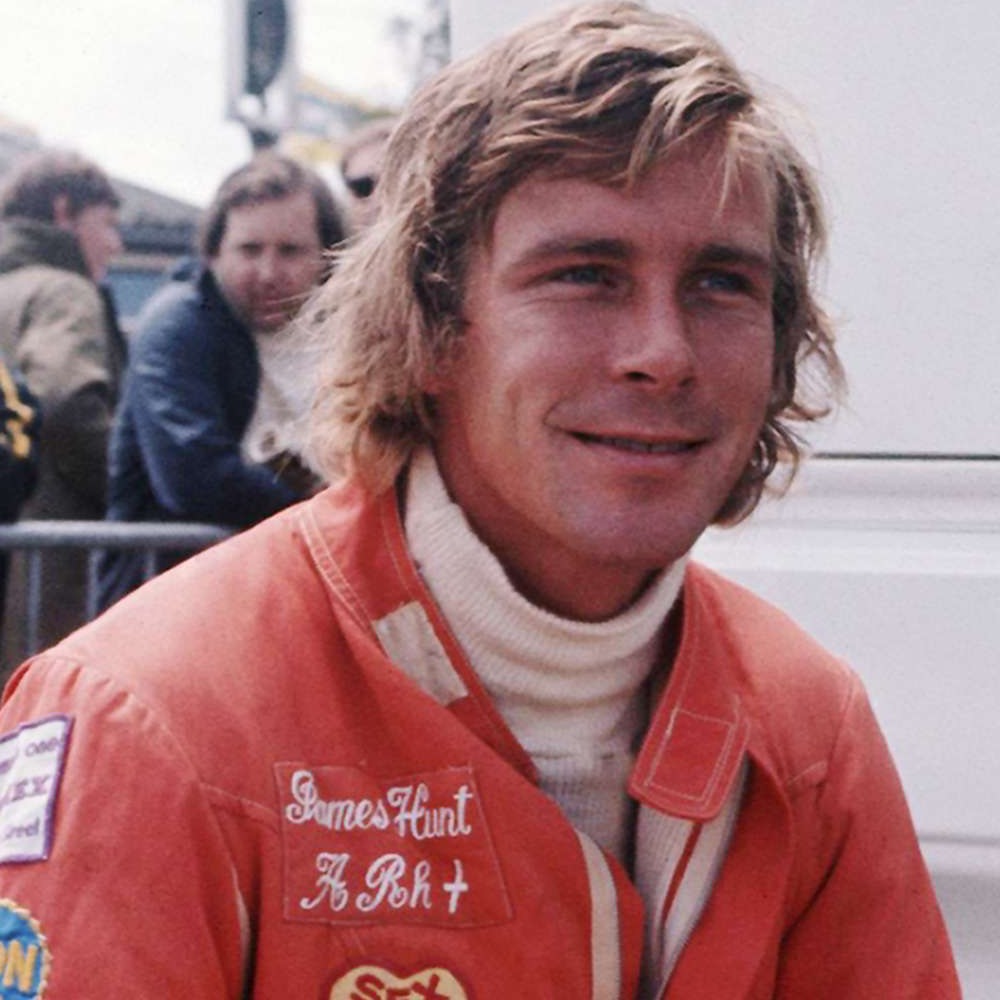
James Hunt
World Championships
1976
Career Statistics
Biography
James Simon Wallis Hunt (29 August 1947 - 15 June 1993) was a British racing driver who competed in Formula One from 1973 to 1979, winning the 1976 World Drivers' Championship in one of the sport's most dramatic and controversial seasons while embodying the playboy lifestyle that made him Formula One's most charismatic and rebellious figure—a blond, handsome, hard-partying driver whose rivalry with Niki Lauda captivated the world and was immortalized in the 2013 film "Rush," ensuring his legend endures decades after his death. Born in Sutton, London, to middle-class parents, Hunt was educated at Wellington College but showed little interest in academics, preferring sports and eventually discovering motor racing in his late teens.
His early career was characterized by spectacular crashes and aggressive driving that earned him the nickname "Hunt the Shunt," reflecting both his pace and his penchant for losing control. Despite limited funding, Hunt progressed through Formula Ford and Formula Three, where his raw speed attracted attention even as his accident rate caused concern. His breakthrough came in 1973 when Lord Alexander Hesketh's aristocratic racing team, Hesketh Racing, hired Hunt to drive their March chassis in Formula One. The team's ethos—glamorous, unconventional, well-funded by Hesketh's inherited wealth, and focused on enjoying racing rather than corporate professionalism—suited Hunt's personality perfectly.
Over three seasons with Hesketh (1973-1975), Hunt matured into a genuinely fast driver, and in 1975, he scored his maiden Formula One victory at the Dutch Grand Prix at Zandvoort, a popular win that established him as a future championship contender. When Hesketh Racing withdrew from Formula One due to financial difficulties at the end of 1975, Hunt's career appeared in jeopardy until Emerson Fittipaldi's sudden departure from McLaren to join his brother's team created an unexpected vacancy. McLaren signed Hunt for 1976 to partner Jochen Mass, pairing him with the McLaren M23—a proven championship-winning chassis that had taken Fittipaldi to the 1974 title. What followed was one of Formula One's most extraordinary seasons.
Hunt's McLaren and Niki Lauda's Ferrari became the dominant forces, with the Austrian and the Briton winning races throughout the first half of the season. Despite their fierce on-track rivalry, Hunt and Lauda were close friends off-track, having raced against each other in Formula Three, and their mutual respect made their championship battle particularly compelling. The season's turning point came at the German Grand Prix at the Nürburgring on 1 August 1976. In torrential rain, Lauda led the drivers' protest against racing in dangerous conditions, but was overruled, and the race proceeded.
On the second lap, Lauda's Ferrari swerved off the track at the Bergwerk corner, crashed into an embankment, and burst into flames. Four drivers stopped to rescue the trapped Austrian from the inferno, but Lauda had already inhaled toxic fumes and suffered horrific burns to his head and face. Medical professionals gave him last rites, believing he would die from his injuries. Miraculously, Lauda survived and began an extraordinary recovery.
Hunt won the race in Lauda's absence, but the championship became secondary to whether Lauda would survive, let alone race again. In an act of almost superhuman courage, Lauda returned to racing just six weeks later at the Italian Grand Prix, his head still bandaged and his burns barely healed, finishing fourth despite intense pain. The championship battle resumed with Lauda leading by points but physically weakened. The season culminated in a rain-soaked Japanese Grand Prix at Fuji, with Lauda leading Hunt by three points.
In torrential conditions reminiscent of the Nürburgring, Lauda withdrew after two laps, deciding his life was worth more than a championship. Hunt drove through the treacherous conditions to finish third, securing the World Drivers' Championship by a single point in one of Formula One's most dramatic conclusions. Hunt's 1976 title was overshadowed by controversy—he'd been disqualified from the British Grand Prix (later reinstated), benefited from Lauda's accident, and won the championship while his rival withdrew from the final race. However, Hunt's six victories, 8 pole positions, and consistent speed throughout the season proved his championship was earned on merit, regardless of circumstances.
Hunt's post-championship career proved anticlimactic. He remained with McLaren through 1978, winning three more races (Britain 1977, USA 1977, Japan 1977) but never seriously challenging for a second title as Lotus, Ferrari, and Brabham proved faster. For 1979, Hunt moved to Wolf Racing, but the team's uncompetitive car and Hunt's declining motivation led to his mid-season retirement at age 31 after the Monaco Grand Prix. He walked away from Formula One with 10 victories, 14 pole positions, 8 fastest laps, and 23 podiums from 92 races—statistics that understate his impact on the sport.
After retirement, Hunt became a Formula One television commentator for BBC Sport, partnering Murray Walker in a celebrated broadcast pairing where Hunt's technical insight and irreverent honesty contrasted perfectly with Walker's enthusiastic hyperbole. His commentary career lasted until his death and introduced Formula One to millions of British viewers during the sport's 1980s expansion. Tragically, Hunt died of a massive heart attack on 15 June 1993 at his home in Wimbledon, London, at just 45 years old. The cause was attributed to years of heavy smoking, drinking, and drug use during and after his driving career—the playboy lifestyle that defined his public image ultimately shortened his life.
James Hunt's legacy transcends his single World Championship and 10 victories. He remains Formula One's most charismatic rebel, a driver who refused to conform to corporate expectations, lived life exactly as he chose, and captured the sport's glamour and danger during its most romantic era. The 2013 film "Rush" introduced Hunt's story to a new generation, with Chris Hemsworth portraying him in a performance that captured both his charm and his demons. Hunt is remembered as the embodiment of 1970s Formula One—fast, glamorous, dangerous, and utterly authentic.